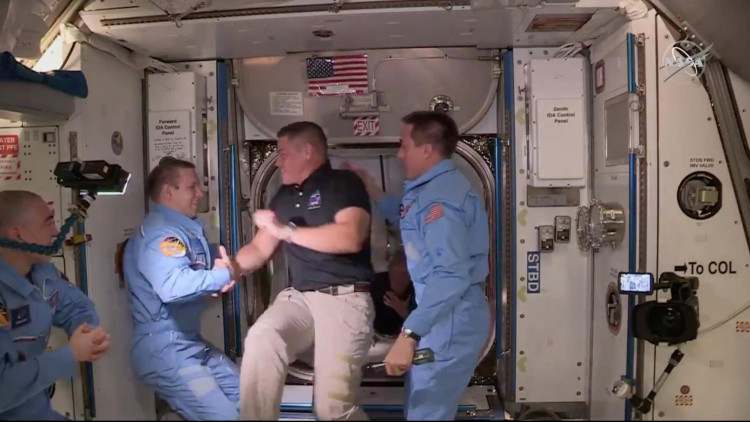NASA and its international partners have officially named the astronauts to fly on SpaceX's Crew-2 mission in 2021. The U.S. space agency announced the names of the crewmembers on July 28.
Crew-2 will be SpaceX's second operational Crew Dragon flight to the International Space Station. The Elon Musk-helmed company is currently preparing for the upcoming Crew-1 mission, which is set to launch in September.
Members of the Crew-2 mission include NASA astronauts Megan McArthur and Shane Kimbrough, who will be the spacecraft's pilot and commander, respectively. They will be joined by ESA (European Space Agency) astronaut Thomas Pesquet and JAXA (Japan Aerospace Exploration Agency) astronaut Akihiko Hoshide. Both will serve as mission specialists for Crew-2.
Crew-2 is scheduled for launch in 2021 spring -- that is, SpaceX's upcoming Crew-1 and current Demo-2 missions turn out successful. Demo-2 is expected to wrap up on Aug. 2, by which time NASA astronauts Doug Hurley and Bob Behnken will return to Eart from the ISS on board the Crew Dragon spacecraft.
Fun fact: Crew-2 member McArthur and Demo-2 member Behnken are actually married.
Following the launch of the Crew-2 mission, the astronauts will spend a duration of six months aboard the ISS. With them are three other astronauts (who will fly aboard a Russian Soyuz spacecraft), bringing a total count of seven crew members on the ISS.
McArthur has flown to space once aboard the Atlantis space shuttle as a mission specialist on STS-125, which was the final servicing mission for the Hubble Space Telescope. Kimbrough has two missions under his belt: first in 2008 aboard Endeavor as part of the STS-126 mission and in the Expedition 49/50 long-duration mission in 2016.
Pesquet has taken part in Expeditions 50 and 51 aboard the ISS, while Hoshide has been on two missions. The first was aboard the Discovery shuttle as part of STS-124 in 2008 and the second in 2012 for Expeditions 32 and 22, flying to the ISS aboard a Soyuz spacecraft.
Humans have worked and lived continuously aboard the ISS for almost two decades, demonstrating new technologies and advancing scientific knowledge. Astronauts in the ISS have paved the way for breakthroughs that cannot be achieved on Earth.
So far, 19 countries and 240 people have visited the ISS. The space laboratory has hosted over 3,000 scientific investigations and research in more than 100 countries. NASA considers the ISS a critical testbed to understand and overcome the challenges of long-duration spaceflight.





